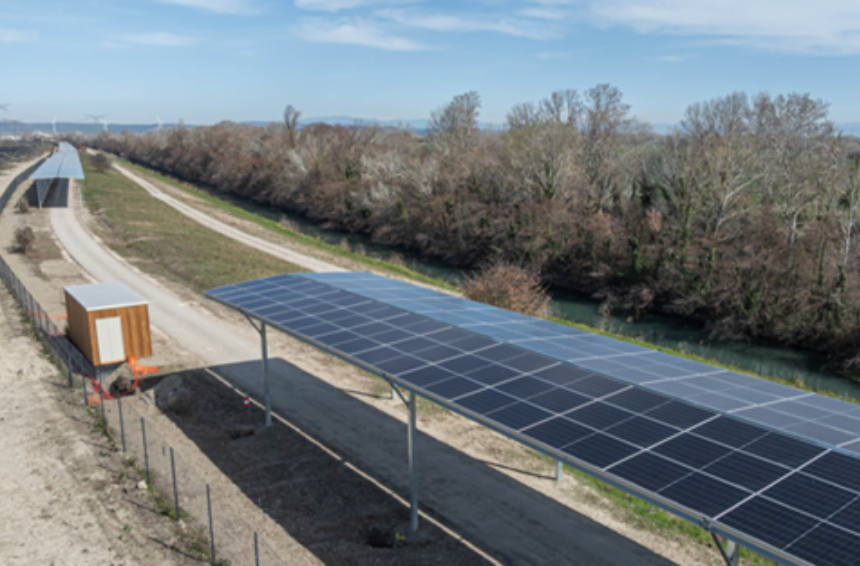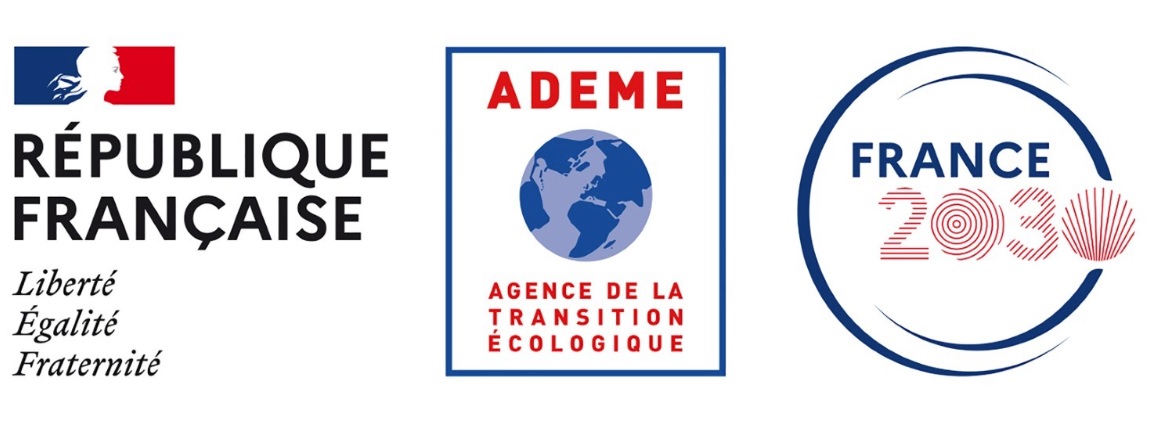OPHELIA, a promising future for linear photovoltaic power plants to be discovered at CIRED 2025
On the occasion of CIRED 2025, which will take place from June 16 to 19 in Geneva, CNR, Nexans, Schneider Electric, SNCF, and SuperGrid Institute will present, for the first time, the project named OPHELIA. This experimental linear photovoltaic park, soon to be commissioned in France (Vaucluse), is located along a cycle route that runs alongside the Rhône River. It is based on an innovative medium-voltage direct current (MVDC) electrical architecture. This promising solution could eventually transform existing linear infrastructures (dikes, roads, cycle paths, railway lines…) into powerful photovoltaic corridors. The OPHELIA project thus addresses two key challenges in the solar energy sector: the scarcity of available land and the integration of renewable energy production into the power system.

OPHELIA : Experimental linear photovoltaic park – Caderousse (France) – © Michel Bost
Supporting the electrification of uses
European power grids are under increasing pressure due to the electrification of end uses, aging infrastructure, and the challenges of integrating renewable energy sources.
Among these sources, the solar industry continues its momentum, with 338 GW of installed capacity in Europe, driven by the ambitious RePowerEU plan, which targets 750 GWp by 2030. Faced with the scarcity of suitable land, the sector sees linear photovoltaics as a promising future. In France, infrastructures such as waterways, riverbanks, roads, and cycle paths alone represent a potential of 35 GWp if equipped with solar power plants. SNCF is also studying the integration of photovoltaic modules along railway lines.
Direct current: an opportunity to collect and distribute high power
Linear photovoltaic installations will extend over several kilometers, sometimes in areas far from public distribution and transmission networks. Medium-voltage direct current (MVDC) is an excellent candidate for transporting the energy produced while minimizing electrical losses and ensuring grid stability.
In the long term, microgrids could collect and distribute electricity in direct current, without conversion to alternating current, between solar parks, consumers (such as data centers or EV charging infrastructure), and storage systems (batteries). This would allow for a more balanced energy flow, reducing pressure on infrastructure and deferring costly upgrades required by grid operators.
OPHELIA’s innovations ready for real-world testing
The OPHELIA project partners have developed a dedicated electrical architecture for linear photovoltaics with a ±5 kV DC voltage. The electricity generated by the solar canopies is transported to intermediate stations positioned along the route, where SuperGrid Institute’s DC electronic transformers raise the panel voltage to the MVDC collection network. This network, made up of Nexans’ medium-voltage DC cables, then carries the electricity to the DC-AC conversion substation connected to the delivery point. The MVDC network’s protection and switching equipment is designed by Schneider Electric.
These new technologies will be showcased at the CIRED exhibition from June 12 to 19, 2025, before being tested in real-world conditions at the “ViaSolaire du Colombier” photovoltaic park, currently under construction in Caderousse (84), with commissioning scheduled for autumn 2025.
In the future, the partners plan to increase the voltage to ±10 kV DC for photovoltaic parks with capacities of several tens of MWp.
Key facts and figures
June 16–19, 2025
CIRED 2025 in Geneva
www.cired2025.org
35 GWp and 38 TWh/year
Estimated potential of linear solar in France (excluding rail infrastructure)
250 kW and 99.2%
Power and efficiency of SuperGrid Institute’s DC electronic transformer
±5 kV DC and ±10 kV DC
Voltages of the demonstrator (1 MWp) and future pilot projects (>20 MWp)
« France 2030 » project

The OPHELIA project is funded by the French government as part of the “France 2030” program, operated by ADEME, which aims to develop the country’s industrial competitiveness and future technologies.
Contacts
CNR | cnr-presse@cnr.tm.fr – 06 74 79 10 00
Nexans | emmanuelle.guy@nexans.com – 01 78 15 04 68
Schneider Electric | andree.clar@se.com – 06 85 81 08 78
SNCF | patrick.chalumeau@sncf.fr – 06 22 68 17 84
SuperGrid Institute | amiel.kaplan@supergrid-institute.com – 07 71 32 28 98


